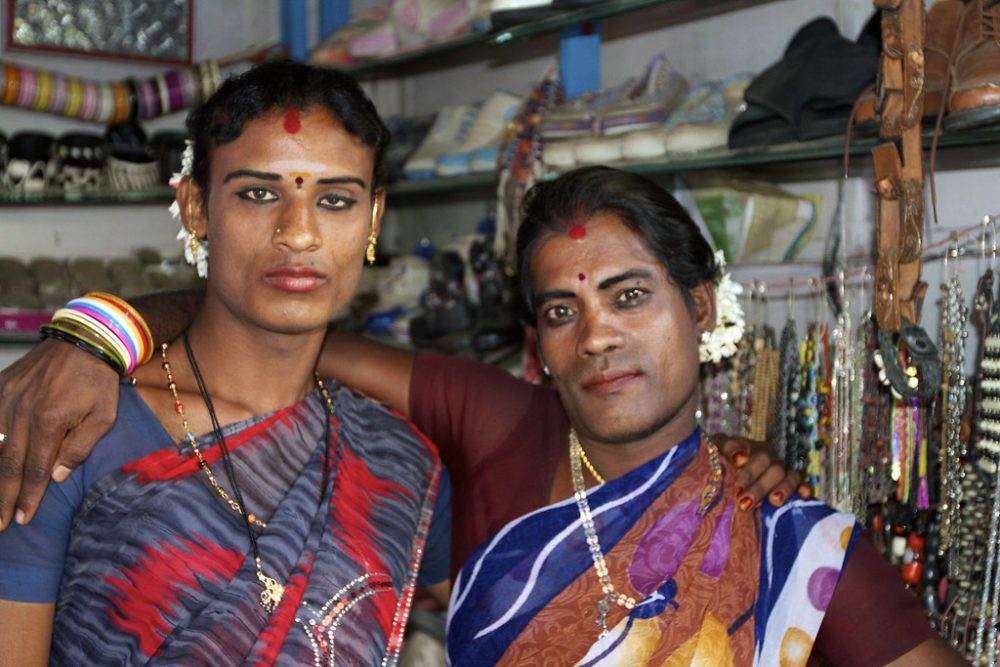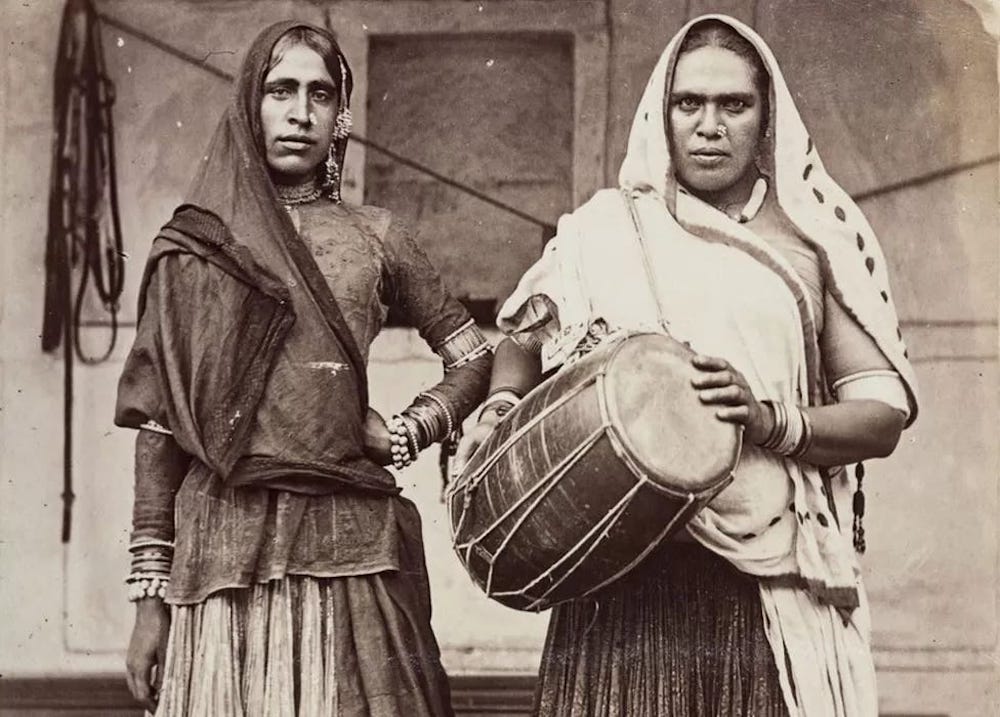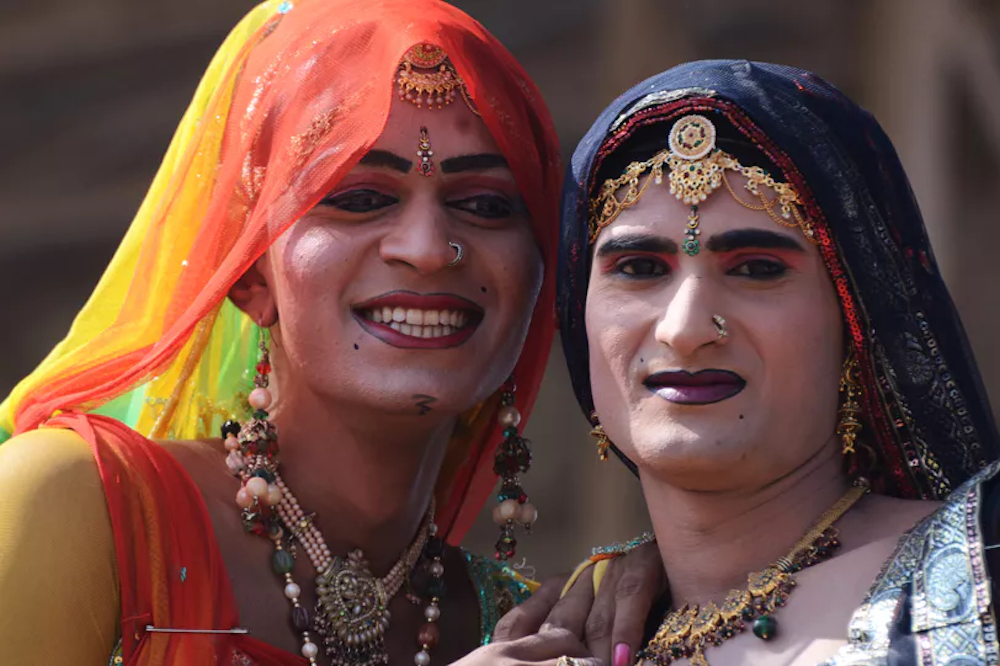
Delhi — A ‘third gender‘ has been acknowledged within Hinduism since Vedic times. Several Hindu texts, such as Manu Smriti and Sushruta Samhita, assert that some people are born with either mixed male and female natures, or sexually neuter, masseurs and prostitutes.

Today, many people of a ‘third gender‘ (“Hijiras“) live throughout India, mostly on the margins of society; and many still work in prostitution, or make a livelihood as beggars.

The Indian Kama Sutra, written in the 4th century A.D., contains passages describing eunuchs or “third-sex” males performing oral sex on men. However, the author was “not a fan of homosexual activities” and treated such individuals with disdain, according to historian Devdutt Pattanaik.

Similarly, some medieval Hindu temples and artifacts openly depict both male homosexuality and lesbianism within their carvings, such as the temple walls at Khajuraho. Some infer from these images that Hindu society and religion were previously more open to variations in human sexuality than they are at present, likely as a reflection of the homophobic British occupation.
In some Hindu sects, many divinities are androgynous. There are Hindu deities who are intersex (both male and female); who manifest in all three genders; who switch from male to female or from female to male; male deities with female moods and female deities with male moods; deities who avoid the opposite sex; deities with principal comoanions of the same sex; and so on.
However, this is not accepted by the majority of Hindus, and is often, considered heretical in nature. Those who do accept it justify with the belief that both God and nature are unlimited diverse and God is difficult comprehend.